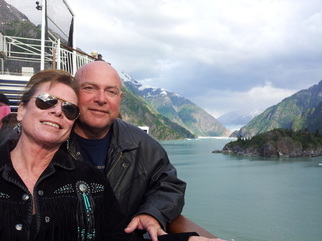
The girl and I were enticed aboard this particular cruise by their promising us unlimited free beverages. The good thing about the Ultimate Beverage Package was that we saved a bundle, because cocktails aboard were pricey. The insidious thing about the UBP is that it can turn an affable social drinker into a depraved alcoholic the minute the boat gets pushed away from the dock, and if you are already a depraved alcoholic, the depths to which you can sink are only matched by the ocean itself.
So we had many good times. We met many interesting drunk people. I remember, somewhat dimly, a gentleman from Connecticut, a fellow Ultimate Beverager, who worked for a well-known international engineering firm, even though he only had a college degree in economics. He described his job as traveling around the world, going to company crisis after company crisis as called upon. After taking in the situation, he would tell those on the ground and his bosses back home he couldn’t help them.
“What do they expect?” he said. “I’m an economist, not an engineer.”
Ordinarily, I am not jealous of other people’s successes, but that guy’s career left me filled with the green emotion. I mean, I could do that.
Other passengers were not so interesting. I expect if you cruise to the Caribbean you can find yourself surrounded by tanned young women in experimental bikinis whose main occupation is rubbing sunscreen on their piercings, but if you cruise to Alaska, even if you are pushing hard at the envelope of both middle age and your current pants size, you will find yourself both young and thin in comparison to most of your fellow passengers, who are composed mainly of mortal threats at the unlimited buffet and doddering bucket-listers. When people describe the peace of being at sea, they are probably talking about this. It's very soothing.
We called on three towns in Southeast AK. At each one we were herded off into tour buses to enjoy the activities we had selected. The bus drivers had all been instructed to point out the local highlights, which usually consisted of an airport you had to take a ferry to get to and a closed fish-canning plant. That didn’t take long, so they would fall back on repeating old tales passed along by the local indigenous peoples.
These nuggets from the verbal traditions of native Alaskans demonstrated that while they may have been able to kill whales with spears made of caribou teeth, they had not really mastered the art of cohesive narrative flow. The old legends are uniformly sad and boring. All of them involve death, and many of them feature problems with in-laws.
They are generally invoked to explain natural phenomena, so the fact that Ketchikan gets some eighteen feet or so of rain a year is, in native lore, the result of the Bear Wife crying tears for her late human husband on the top of the local mountain.
Now, the ancient bullshitter who concocted this tale could not have known of persistent low pressure systems held in place by the jet stream and regional topographic features, but he knew damn well rain was not caused by a bear crying on the mountain. “These yahoos will believe anything,” he was probably sniggering to himself as he walked away from the Stone Age bonfire after concocting that whopper. “Wow, the cliff is slippery tonight. Must be all those bear tears. Hah! Whoops! Aieeee!”
And yet, his words live on from that prehistoric moment, repeated by fresh-out-of-college tour guides who are supporting themselves by subsistence jobs before they go on to grad school to get another useless degree, to retired white people crammed into an overheated bus, which provides yet another example of the past constantly reaching out to annoy us.
Well, I’ve reached my word limit for today and we haven’t even covered zip-lining with Aunt Carol or eating at Washy Washy, so we’ll have to come back with a Part Two for this one.













 RSS Feed
RSS Feed











